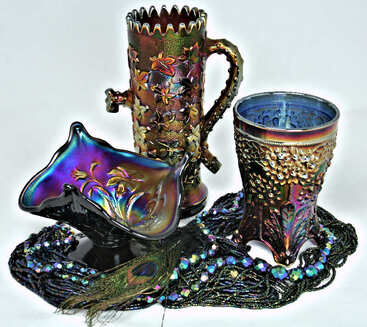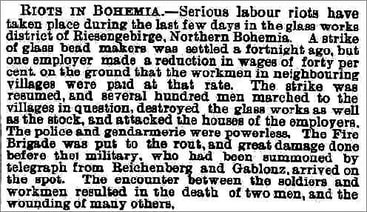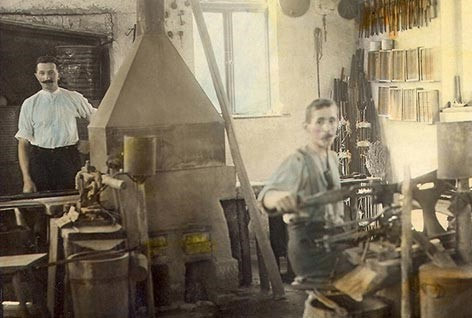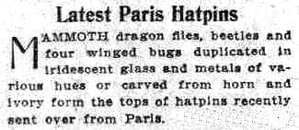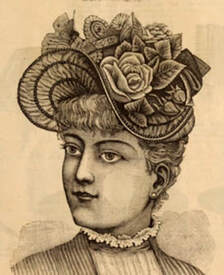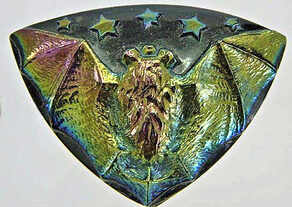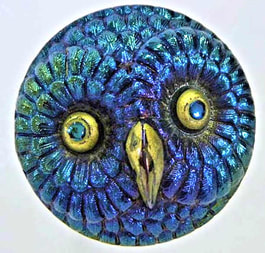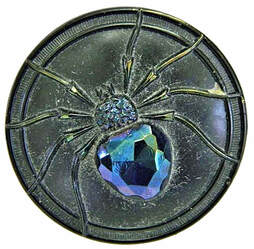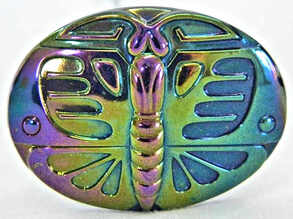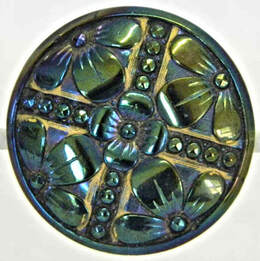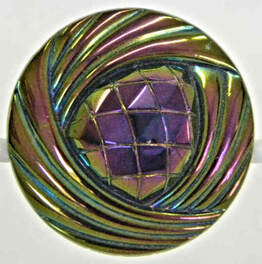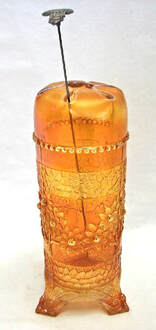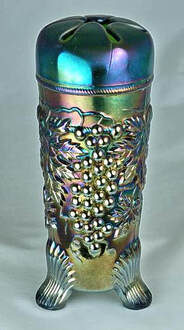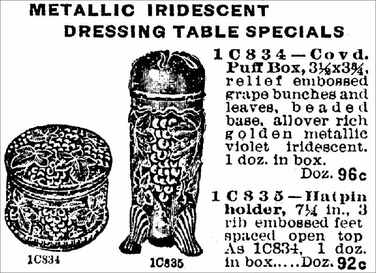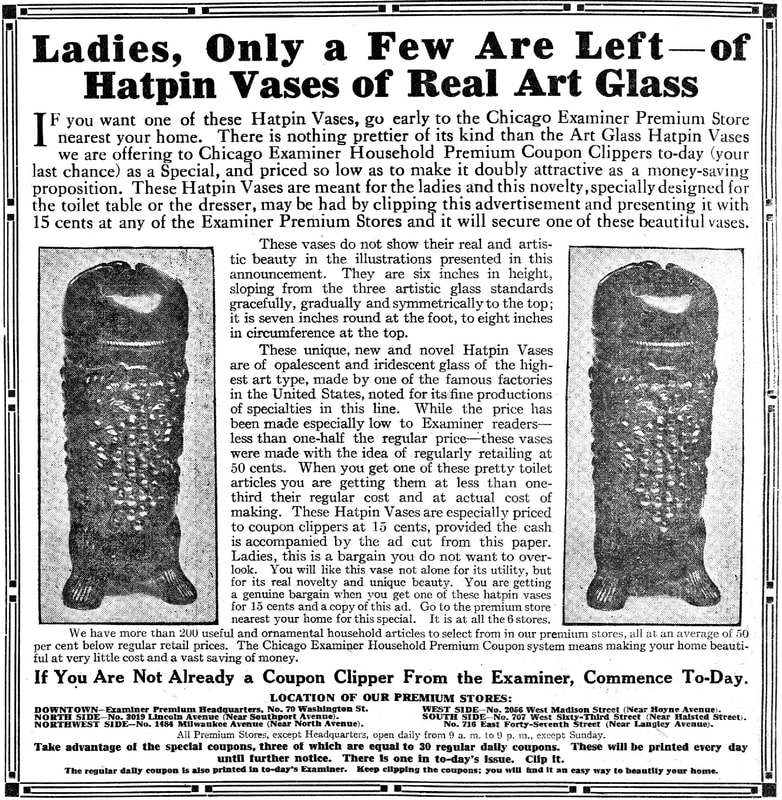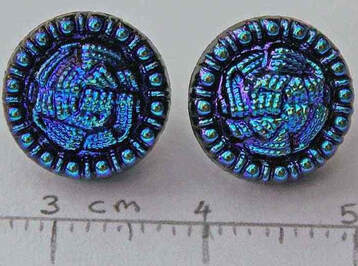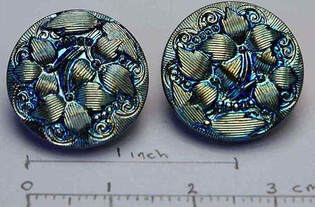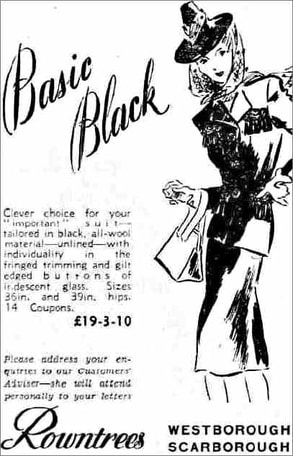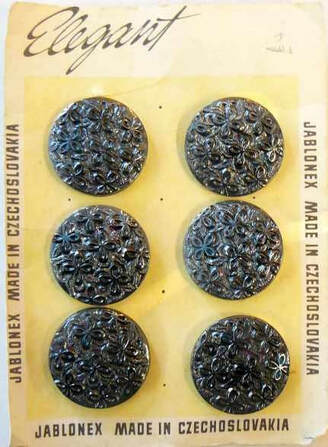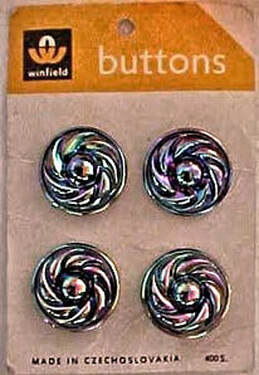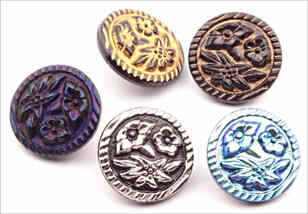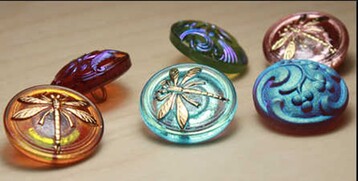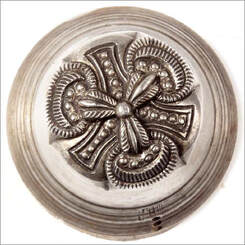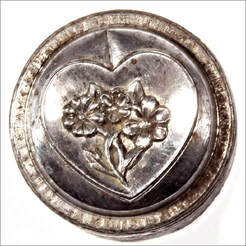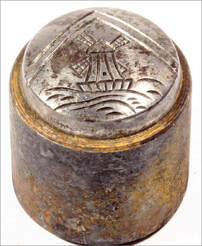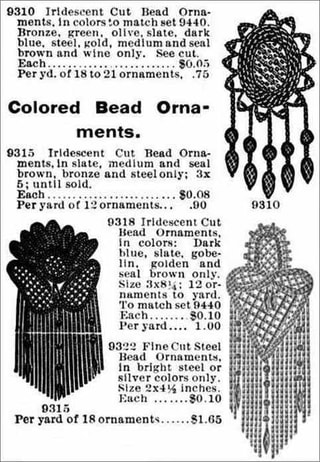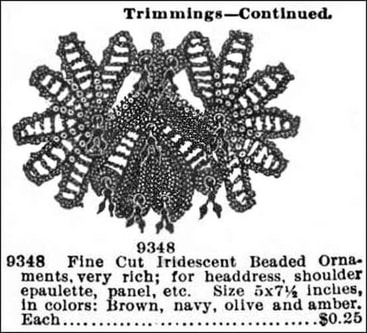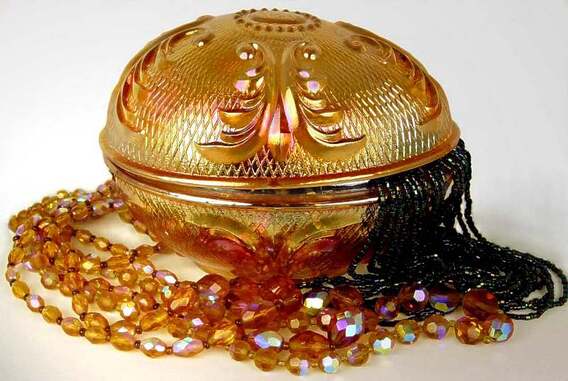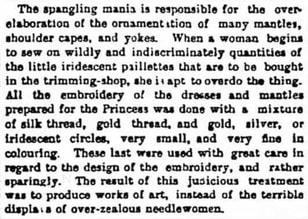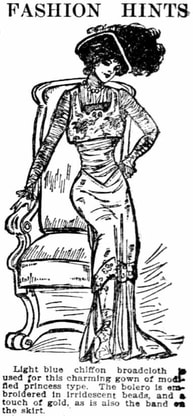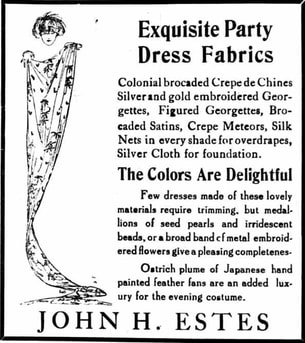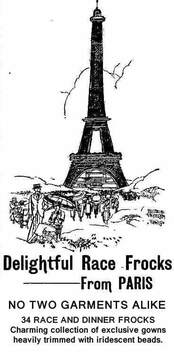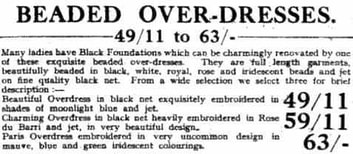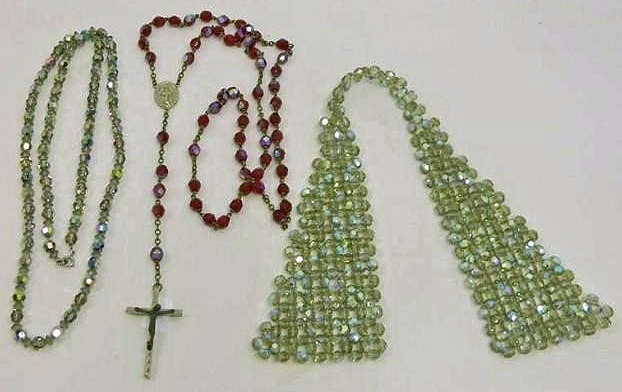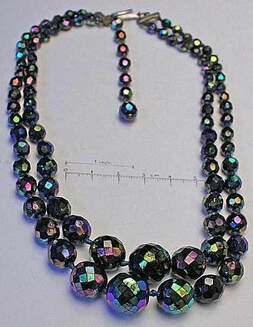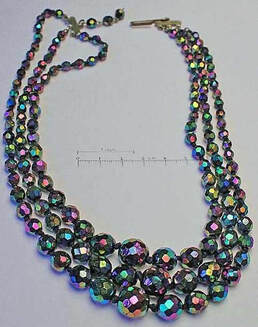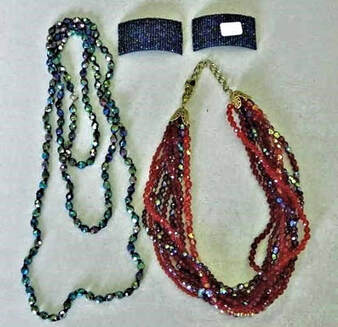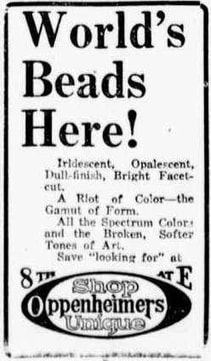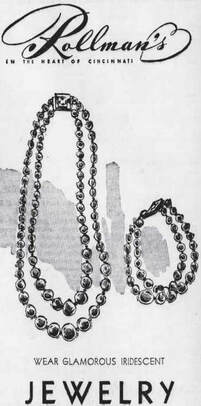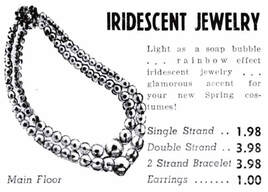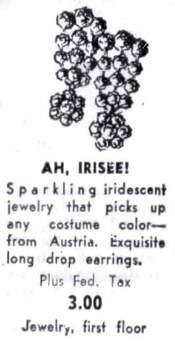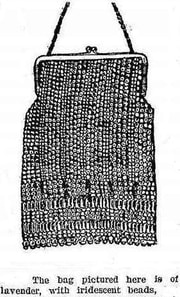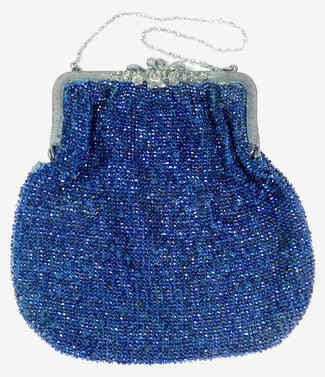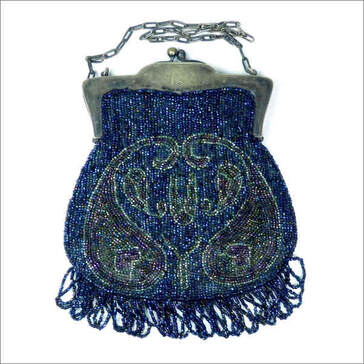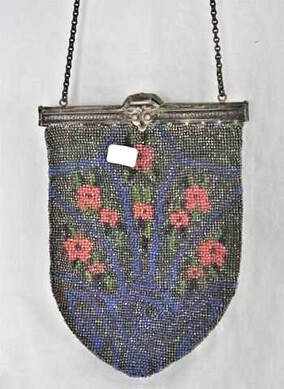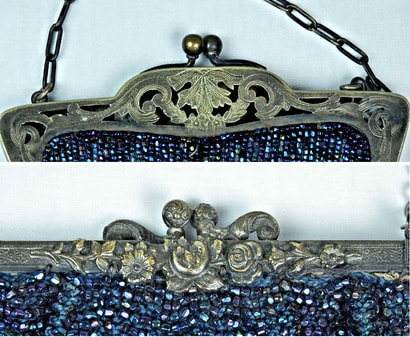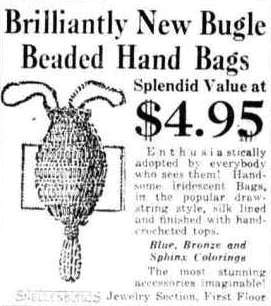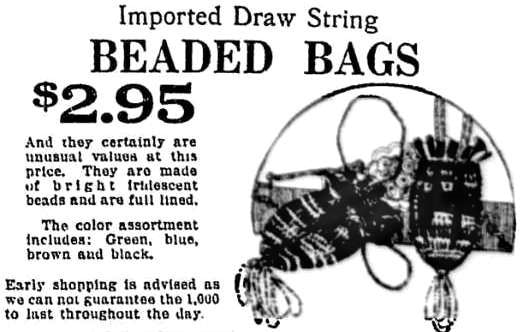Read All About It! - Carnival is the Height of Fashion!
Updated from our original research articles published in 2015
In 2015, we wrote a series of feature articles based on our research into Carnival jewellery - beads, hatpins and buttons and more. Subsequently, in 2017, our further research into the origin of iridescence on glass tied in with this, and we revealed that the first use of iridescence on glass and its inventor of the process - Leo Valentin Pantocsek working in Bohemia. It's sad to say that our research has since been copied and passed off by others as their own work, without the usually accepted courtesy of asking permission or acknowledging the source. However, due to a growing number of requests in our Facebook NetworK Group for more information about Carnival jewellery, we have released this updated and expanded major feature on this wide-ranging topic. It is based on our original research and is wholly our work.
|
Generally, when we hear "Carnival Glass", we mostly think about versatile pieces that were made to be decorative, practical or functional; bowls of all sizes, plates, jardinières, comports, cups, candlesticks, massive table centrepieces, and more. However, there is another genre - fashion accessories! Here we look at the part played by iridescence in fashion, particularly Carnival hatpins, beads and bags (purses), and the way newspapers reported and advertised them. A Brief History Carnival Glass hatpins, buttons and beads were made in Bohemia (Czechoslovakia), probably mainly in the Gablonz region. Until the 1900s, it was essentially a cottage industry with a complex, supporting infrastructure. A contemporary account of life in the area at that time noted that “full of busy life was every home; the cottages often being of two rooms only, and with windows all closed against the sharp mountain air. The rooms over-heated, and serving as workshops, living rooms and bedrooms, and yet smart and clean. Here we saw them making women’s glass, dress ornaments and glass trinkets.” Production was carried out in stages, with one workshop producing the glass and yet another crafting and finishing. The raw glass for the industry was made in a number of glassworks: bars and rods of coloured glass were supplied by them to the craft-workers who then press moulded glass beads, buttons and hatpin heads. Merchants would travel around buying the finished items. Examples of the moulds used are shown later, in the "Buttons" section. |
Carnival beads - a perfect accompaniment to this display. (left to right: Dugan's Amaryllis, Northwood's Town Pump, Fenton's Orange Tree).
|
Strikes and Riots!
The early cottage industry in Bohemia wasn’t always a bed of roses. Reports in some British newspapers tell of widespread strikes and labour riots.
Strikes and Riots!
The early cottage industry in Bohemia wasn’t always a bed of roses. Reports in some British newspapers tell of widespread strikes and labour riots.
|
The press clipping below, sandwiched between ads for “Dr Lalor’s Phosphodyne Remedy” and reports of a “Plague of Rats in Suffolk”, gave a vivid account of the events in Bohemia that ended in tragedy for some. In 1892, the Edinburgh Evening News reported that “2000 glass-bead workers in the Gablonz district of Northern Bohemia went on strike yesterday on account of a reduction in wages”. Hampshire Advertiser County newspaper, February 1890
|
Czech glass cottage workers, 1845. Gablonz Heritage Archive.
|
By the 1920s there was a more organised approach, with workers being employed in small workshops, of which there were said to be some 1,100 by the mid/late 1930s. After WW2, private enterprises were closed down, and it was not until the 1950s that bead and jewellery production recommenced in State-owned businesses, with one of the main centres being around Jablonec nad Nisou. In 1989, the main State-run operation was privatised, and once again, home-based working became a part of the scene. (Source: Czech Glass Review Journal, 1993).
By the 1920s there was a more organised approach, with workers being employed in small workshops, of which there were said to be some 1,100 by the mid/late 1930s. After WW2, private enterprises were closed down, and it was not until the 1950s that bead and jewellery production recommenced in State-owned businesses, with one of the main centres being around Jablonec nad Nisou. In 1989, the main State-run operation was privatised, and once again, home-based working became a part of the scene. (Source: Czech Glass Review Journal, 1993).
Hatpins.
|
The shapes and designs of hatpins were typical of the era, featuring bugs and dragon flies, as these newspaper clips show. The extract below (centre) is from the San Francisco Call, newspaper, 1909.
The clip on the far right from a Bloomingdale’s Fashion Catalogue, illustrates the elaborate decoration that could be found on ladies’ hats … and thus why hatpins were needed to secure these fancy concoctions in place. Note the large butterfly decoration on the left side of the hat. The butterflies, beetles and other such “creatures” that were featured on the iridescent hatpins, would have been fashionably appropriate. |
Above: left, Flying Bat. Centre: Owl, and right, Spider hatpins. All courtesy of Seeck Auctions.
Naturally, if you had hatpins, you needed something that you could keep them in safely ... and although the hatpins were being imported, the US Carnival Glass makers were happy to provide you with the perfect solution - a hatpin holder.
Naturally, if you had hatpins, you needed something that you could keep them in safely ... and although the hatpins were being imported, the US Carnival Glass makers were happy to provide you with the perfect solution - a hatpin holder.
|
There were several to choose from, including Northwood's Grape and Cable, Fenton's Orange Tree and their popular Butterfly and Berry. Above left: a marigold Fenton Orange Tree hatpin holder (courtesy Seeck Auctions). Right: a green Northwood
Grape and Cable hatpin holder. |
The amazing ad shown above was in a 1911 Chicago Examiner newspaper.
All that the reader had to do was clip the ad and pay just 15 cents in one of the six Examiner Premium Stores to obtain a magnificent "unique, new and novel" Northwood Grape and Cable "Hatpin Vase". The ad stated that 15 cents was less than half of the regular 50 cents price for these items, but as we have seen elsewhere - in our unique "Sell it To Me!" feature - this is another example of clever marketing. The ad on the left is from the Mid Spring 1911 Butler Brothers catalogue, and the same hatpin holders were being sold wholesale for 92 cents a dozen - that is less that 8 cents each. So ... retailing to coupon clippers for 15 cents each was a very reasonable mark-up, and doubtless the customers would also buy other items! |
|
Buttons
Before we look at buttons, we should add a word of caution about buttons that pretend to be hatpins. Many so-called hatpins are nothing of the sort; we know from first-hand experience that many iridescent buttons (new and old) have been transformed into "hatpins" by the simple addition of a metal pin. These "buttons masquerading as hatpins" may initially have been sold as such, but by the time they have been resold a time or two, there is every chance that they could be regarded as "old hatpins". So, the message is ... be aware, and be careful. Iridescent buttons featuring moulded designs have been in production over many decades, mainly in Czechoslovakia (now the Czech Republic), and they are still being made today. Above: left, contemporary Czech buttons, and right, trillium contemporary iridised glass buttons.
Courtesy of Mike Brown. |
A fancy outfit with gilt edged buttons of iridescent glass. The Yorkshire Post, 1945
|
|
Note the name “Jablonex” on the card of "Elegant" brand buttons below left, which indicates they were made in Jablonec nad Nisou, famed for its glass bead and jewellery production. The “Winfield” card (below right) was sold in Woolworths, a general store in the UK – “Winfield” was their trademark. Both of these cards of Czech-made buttons date from c.1950s or 1960s.
|
Selections of contemporary iridised buttons.
|
Button moulds.
Here are three old button moulds from Czechoslovakia. Buttons were made from them individually using a hand-operated press. The windmill design (on the right) shows how each mould was mounted for pressing.
Collecting Carnival buttons is a niche area and those interested can find information on the internet. Ruth Clark’s books on Carnival Glass buttons detail many of the older designs that are known.
|
Necklaces, Beaded Handbags (Purses) and other Jewellery
Iridescent Carnival Glass beads were very much in demand for the jewellery and fashion industries, over the decades from the late 1800s (and in fact can still be bought in bulk today). They have been used all around the world on gowns, belts, everyday dresses, all manner of fashion items and jewellery. Much of this has been recorded in newspapers over the decades and we’ve amassed a wealth of fascinating archive information, which we present here. There was a developing craze for sparkling iridescence on items of fashion. Dubbed the “spangling mania” by elements of the press, some of the iridescent additions were no doubt a bit “over the top” (see the newspaper clip, right). But fashionistas from all walks of society adored iridescence—and in the form of glass beads and trimmings, jewellery and more, it was to go from strength to strength.
|
A rare marigold Renaissance pattern two-piece egg made by Zabkowice, Poland The perfect accompaniment
to dazzling Carnival beads! Blackheath Gazette, London, 1896.
|
|
A showy dress ornament made of green, blue, silver and gold iridescent beads.
|
Jewellery that many will be familiar with today, much of it was made in Europe (from the late 1800s, right through into the 1960s), and exported all around the world. Perhaps not surprisingly, Baking Powder, our 'old favourite' product that was often used to promote the sale of Carnival Glass, got in on the act!
A great deal from the Washington Sunday Star in 1922.
